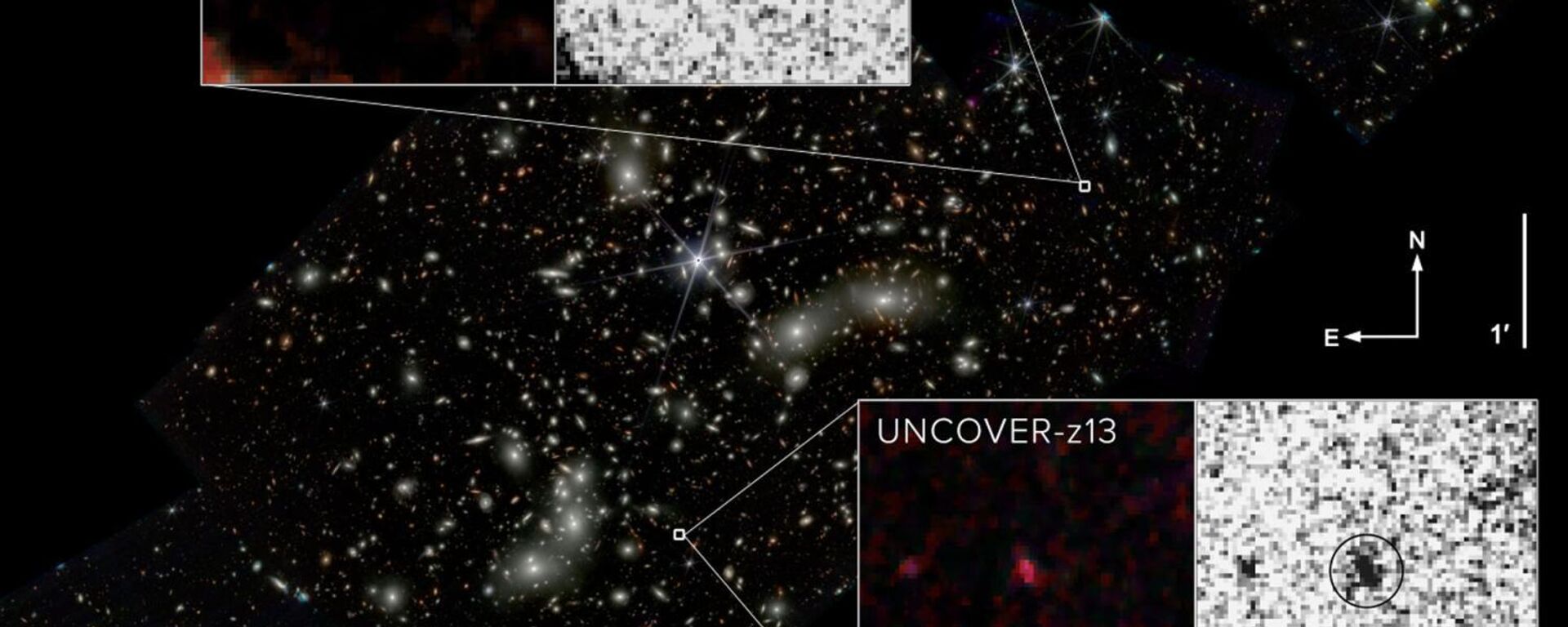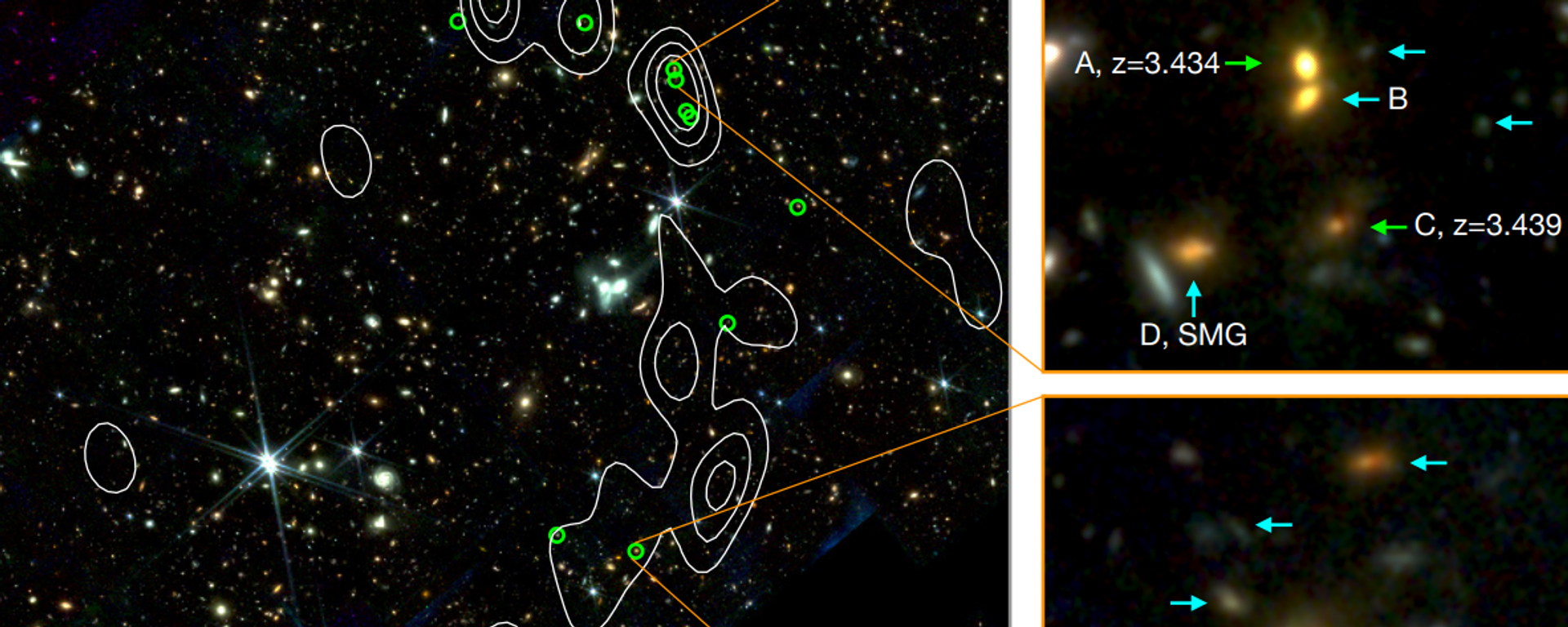https://sputnikglobe.com/20231125/powerful-cosmic-ray-detected-coming-from-space-void--1115207298.html
Powerful Cosmic Ray Detected Coming From Space Void
Powerful Cosmic Ray Detected Coming From Space Void
Sputnik International
Utah-based researchers have picked up on an extremely rare cosmic ray that seemingly reached Earth from an utterly distant space void. The discovery has produced numerous scientific debates regarding its origin and further impact on physics.
2023-11-25T17:37+0000
2023-11-25T17:37+0000
2023-11-25T17:37+0000
beyond politics
science & tech
earth
osaka
university of utah
https://cdn1.img.sputnikglobe.com/img/07e6/08/15/1099808593_0:3:1281:723_1920x0_80_0_0_409cd33a39c5c9c2ce7d88fecc53e389.jpg
A research group working on the Telescope Array Collaboration project hosted at the University of Utah has detected an ultra-high-energy cosmic ray that appears to have no clear origin. The astronomers are puzzled by the fact that the ray seemingly emerged from a virtually empty void in space. Speculation But No ConsensusDetecting cosmic rays is part of the day-to-day work routine for astronomers all around the world. The sun emits streams of energy particles that telescopes identify as mere “noise”. These streams are classified as “low energy” cosmic rays. Ultra-high-energy cosmic rays (UHECRs), however, are a totally different beast. Detecting a UHECR is a once-in-a-blue-moon occurrence and breeds a great deal of conjecture.These cosmic events are exceedingly rare - to the point where the researchers claim that UHECR detections happen less than one particle per century per square kilometer. The researchers remain divided on the root of the phenomenon since nothing in our galaxy has the power to produce it.A similar ray (later called the Oh-My-God particle) was detected in Utah's Fly’s Eye experiment in 1991. The particle had more energy than theoretically conceivable for cosmic rays traveling to Earth from other galaxies. To put it bluntly, the particle should not exist.The recent UHECR is even more baffling since it supposedly came from a nearly empty area of deep space. Black holes, gamma-ray bursts, and active galactic nuclei are believed to have something to do with the ray, but it is still up for debate.The Power of Thanos Compared To Human Particle AcceleratorsFor a cosmic ray to fall under the UHECR category, its energy must exceed one exa-electron volt (Eev). This is a million times the energy reached by the most advanced artificial particle accelerators. The UHECR detected by the Utah team showed an estimated energy of roughly 244 EeV. The ray was poetically called Amaterasu (named after the goddess of the sun in Japanese mythology).Mysterious Origin Challenges Physics As We Know ItThe astronomers published their research conclusions in the Science journal, concluding that the rare space phenomena might involve aspects of particle physics still unknown to scientists. The Oh-My-God and the Amaterasu particles were identified using different monitoring methods, confirming that while these cases are extremely uncommon; ultra-high energy events are indeed real.As such, the mysterious origins of Amaterasu might directly challenge existing knowledge regarding UHECR sources and behavior, scientists claim.
https://sputnikglobe.com/20231114/webb-space-telescope-uncovers-two-most-distant-galaxies-yet-1114961596.html
https://sputnikglobe.com/20231121/webb-telescope-reveals-cosmic-chain-of-20-galaxies-in-early-universe-1115117547.html
earth
osaka
Sputnik International
feedback@sputniknews.com
+74956456601
MIA „Rossiya Segodnya“
2023
Sputnik International
feedback@sputniknews.com
+74956456601
MIA „Rossiya Segodnya“
News
en_EN
Sputnik International
feedback@sputniknews.com
+74956456601
MIA „Rossiya Segodnya“
Sputnik International
feedback@sputniknews.com
+74956456601
MIA „Rossiya Segodnya“
space, sun, telescope, galaxy, black hole, cosmic rays
space, sun, telescope, galaxy, black hole, cosmic rays
Powerful Cosmic Ray Detected Coming From Space Void
Utah-based researchers have picked up on an extremely rare cosmic ray that seemingly reached Earth from an utterly distant space void. The discovery has produced numerous scientific debates regarding its origin and further impact on physics.
A research group working on the Telescope Array Collaboration project hosted at the University of
Utah has detected an ultra-high-energy cosmic ray that appears to have no clear origin.
The astronomers are puzzled by the fact that the ray seemingly emerged from a virtually empty void in space.
Speculation But No Consensus
Detecting cosmic rays is part of the day-to-day work routine for astronomers all around the world. The sun emits streams of energy particles that
telescopes identify as mere “noise”. These streams are classified as “low energy” cosmic rays. Ultra-high-energy cosmic rays (UHECRs), however, are a totally different beast. Detecting a UHECR is a once-in-a-blue-moon occurrence and breeds a great deal of conjecture.
These cosmic events are exceedingly rare - to the point where the researchers claim that UHECR detections happen less than one particle per century per square kilometer. The researchers remain divided on the root of the phenomenon since nothing in our galaxy has the power to produce it.

14 November 2023, 22:18 GMT
A similar ray (later called the Oh-My-God particle) was detected in Utah's Fly’s Eye experiment in 1991. The particle had more energy than theoretically conceivable for cosmic rays traveling to Earth from other galaxies. To put it bluntly, the particle should not exist.
The recent UHECR is even more baffling since it supposedly came from a nearly empty area of deep space.
Black holes,
gamma-ray bursts, and active galactic nuclei are believed to have something to do with the ray, but it is still up for debate.
The Power of Thanos Compared To Human Particle Accelerators
For a cosmic ray to fall under the UHECR category, its energy must exceed one exa-electron volt (Eev). This is a million times the energy reached by the most advanced artificial particle accelerators. The UHECR detected by the Utah team showed an estimated energy of roughly 244 EeV. The ray was poetically called Amaterasu (named after the goddess of the sun in Japanese mythology).
“No promising astronomical object matching the direction from which the cosmic ray arrived has been identified, suggesting possibilities of unknown astronomical phenomena and novel physical origins beyond the Standard Model,” said Professor Toshihiro Fujii from the Graduate School of Science and Nambu Yoichiro Institute of Theoretical and Experimental Physics at Osaka Metropolitan University.
Mysterious Origin Challenges Physics As We Know It
The astronomers published their research conclusions in the Science journal, concluding that the rare space phenomena might involve aspects of particle physics still unknown to scientists. The Oh-My-God and the Amaterasu particles were identified using different monitoring methods, confirming that while these cases are extremely uncommon; ultra-high energy events are indeed real.
As such, the mysterious origins of Amaterasu might directly challenge existing knowledge regarding UHECR sources and behavior, scientists claim.

21 November 2023, 22:20 GMT




